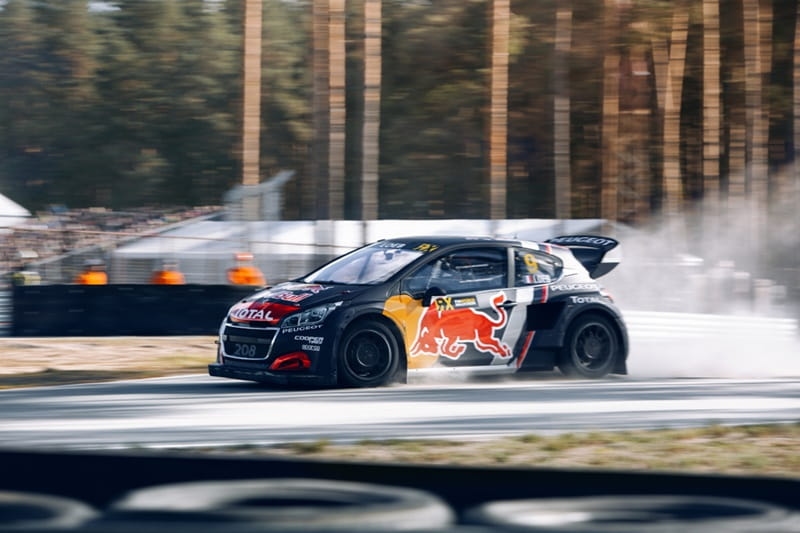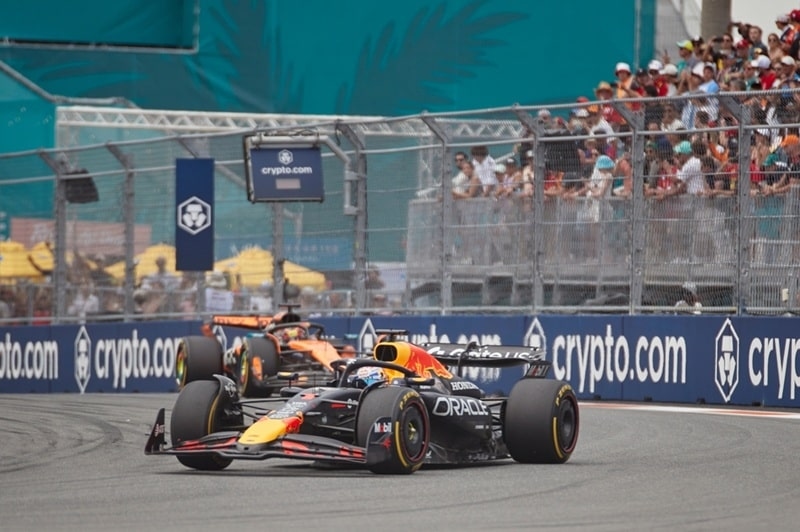How Does an F1 Steering Wheel Work: The Ultimate Guide

There’s no sport like Formula One. Sure, other motorsports are tough, but F1 is the top dog for a reason. No other series pushes drivers and cars to such limits, especially while zipping around Monaco’s tight streets at 180 mph. Those constant demands? They come from the car’s steering wheel—an expensive piece of carbon fiber. F1 drivers have over two dozen buttons, knobs, dials, menus, displays, and LEDs on that wheel. And they handle all this while trying to keep their rivals behind them. You might think street cars have a lot of buttons on their wheels too. But F1 wheels are on another level. To clear things up for everyone—whether you’re new to F1 or a longtime fan who still gets confused by terms like strat, entry, mark, overtake, and DRS—we’ve put together the ultimate guide.
Main Parts of the Steering Wheel
There’s more to the steering wheel than just buttons.
RPM-Indicator LEDs
LED lights for RPM levels tell the driver when to shift. Drivers set these up in different colors for low and high RPMs. These LEDs can be on the wheel or dash, based on the driver’s setup.
Display
Like your car’s dashboard, F1 drivers need a display. The mini screen shows telemetry, current gear, lap times, gaps to other cars, battery charge, menus, and car performance data. All read at high speeds. The display can be on the wheel or the car’s dash, depending on preference. On-wheel screens give more leg room but are harder to see when turning. Dash screens are easier to read but take up leg room.
Quick-Release Hub
This feature makes it easier to get in and out of the car’s cockpit. Handy in case of a crash or fire.
Handles
The handles are what drivers grip to steer at 190 mph. They’re custom-molded to each driver’s hands, and teams can use different rubber compounds. Cool, right?
Paddles
F1 wheels have more than just paddles for shifting gears. Fans who pay close attention to in-car cameras might already know this. There are usually three sets of paddles, but setups can vary. The top paddles give quick access to strategic settings, engine modes, overtake mode, DRS mode, etc. The middle ones are for shifting the eight-speed transmission. The lower ones are often for the clutch, used mainly for race starts, tire warming, or celebratory donuts.
Switches and Bbuttons on an F1 Steering Wheel
The steering wheel has 25 buttons and switches, plus the clutch and shift paddles. Five of those adjust the car's brake settings, like shifting the brake balance from front to rear or vice versa, changing engine braking, or adjusting brake migration. Three switches control the differential for different parts of a corner. The rest handle various tasks like tweaking Power Unit settings, changing screen data, activating the radio, or the pit lane speed limiter. The DRS, which is more effective in recent years due to bigger rear wings, can be activated with a button.
Steering and gear changes are the most used functions. For instance, in Melbourne, a driver uses the shift paddles about 50 times per lap, aided by 15 shift indicator LEDs. Besides steering and shifting, drivers frequently adjust the brake balance to fine-tune the car for different corners. F1 cars are super fast and vibrate a lot, especially on bumpy tracks. The small buttons and the fact that drivers wear gloves don't help either. To make things easier, teams use high-reliability buttons from airplanes that need a firm press and give solid feedback. They also add small plastic rims around some buttons to prevent accidental presses, which can be adjusted race-by-race. The team monitors data and can alert the driver if a wrong setting is chosen.
F1 Steering Wheel Materials
F1 steering wheels are made from carbon fiber, fiberglass, silicon, titanium, and copper. These materials make up the hundreds of parts in a wheel. Most components, like the circuitry, carbon enclosure, quick release, and electrical connectors, are built in-house at our Brackley factory, except for the central display and its circuit board, which are standard across all teams.
Drivers are very involved in hte design process because the wheels are custom-made for them. The ergonomics, shape, and grips are tailored to their hands and preferences. This isn't just a start-of-season thing; it's ongoing. Drivers might request changes to the grips and button layout based on their needs and the track layout.
You May Also Like: Top US Drivers in F1 History: The Best American F1 Drivers of All Time
F1 Teams Have Unique Steering Wheels
Each F1 team has its own unique steering wheel because it's something the driver can control, so they want it to fit their specific needs. A lot of time and effort goes into the design so the driver feels comfortable in the car. For example, Alpine has a rounder steering wheel compared to its rivals, while Williams is the only team without a digital screen. Williams did this to save weight, making their wheel smaller than others. On the other hand, Ferrari has a large steering wheel with up to six rotary dials, compared to Mercedes' three. Both teams have a wheel packed with buttons, but Red Bull takes a more relaxed approach, which might make it easier for their drivers to navigate. Regardless of the number of buttons, each team's steering wheel has them in different locations. So, no two steering wheels are the same, and teams design one that's specific to their needs.
F1 Steering Wheel Evolution Over the Years
An F1 steering wheel hasn't always looked like it does today. In the early years of the championship, it looked a lot like a regular road car's steering wheel. Back in the 1950s, when Juan Manuel Fangio and Stirling Moss were racing, F1 technology wasn't that advanced. They had basic wood and aluminum wheels. In the 1960s, the wooden rim got leather-wrapped for better grip. Not much changed until the mid-1970s when the first button appeared: an emergency ignition-kill switch. F1 engines had throttle sliders that could get stuck, so the switch allowed drivers to turn off the engine quickly to avoid hitting barriers. This started major changes, and by the 1980s, suede replaced leather for better grip. Stefan Johansson, an F1 driver from 1980 to 1991, said it was the first "real improvement." Drivers then started asking for wheels specific to their driving style. Nigel Mansell wanted a thicker grip, while Ayrton Senna preferred a thinner one.
In the 1980s, wheels got more features, including a quick-release mechanism, which made it easier to get out of the car in an emergency. A radio button was added for better communication, and some wheels had a "boost" button for overtaking. But in 1989, Ferrari introduced a semi-automatic gearbox with paddle shifts behind the wheel, replacing the clutch pedal. This made cars faster and lighter. Other teams followed in the 1990s, and wheels became rectangular with more buttons and rotary dials. By the turn of the century, rubber replaced suede, and drivers began to mold the wheel around their hands for better feel. Technology kept improving, adding more buttons so drivers could fine-tune settings.
In 2014, an LCD screen was added to the wheel during the turbo-hybrid era, allowing drivers to access data mid-race. In 2020, Mercedes introduced Dual Axis Steering, which allowed drivers to adjust the alignment of the front wheels for better speed or tire warming. Although DAS was banned in 2021, it showed that steering wheels can be used for more than just turning an F1 car.
Similar Reads You May Enjoy: The Surprising Reason Why F1 Cars Have a Wooden Plank
Conclusion
The Formula 1 steering wheel is a marvel of modern engineering and technology, encapsulating decades of racing evolution and innovation. This compact device serves as the nerve center for the driver, enabling precise control over the car's numerous functions, from gear changes to differential adjustments. Each button, dial, and switch is meticulously designed to optimize performance and ensure the driver's comfort and efficiency. As the sport continues to push the boundaries of speed and technology, the steering wheel remains a critical component, reflecting the sophistication and complexity of F1 racing. It is not just a tool for steering but a powerful interface between the driver and the machine, embodying the relentless pursuit of perfection that defines Formula 1. The ongoing advancements in steering wheel technology will undoubtedly continue to enhance the capabilities of drivers and teams, driving the sport forward into an exciting future.
This content was created by AI




